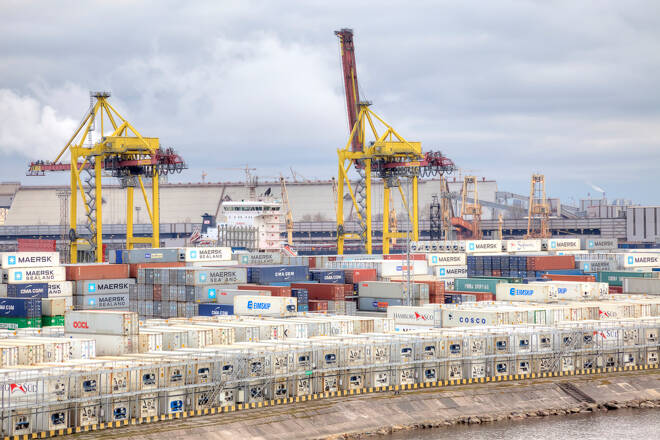Advertisement
Advertisement
Eurozone Manufacturing PMI Rises Thanks to Italy, Greece, and Spain
By:
Euro area manufacturing PMI numbers failed to move the dial as the China PMIs resonated. German inflation figures will influence, however.
It was a busy morning on the European economic calendar. Manufacturing sector PMI numbers for Italy and Spain and finalized PMIs for France, Germany, and Italy were in focus. German unemployment numbers were also on the docket but showed little change.
The Spanish manufacturing PMI increased from 48.4 to 50.7, with Italy’s manufacturing PMI rising from 50.4 to a 10-month high of 52.0. Economists forecast PMIs of 49.1 and 51.0%, respectively.
However, finalized manufacturing PMIs for France, Germany, and the Eurozone were mixed.
The French manufacturing PMI fell from 50.5 to 47.4 versus a prelim 47.9, with the German manufacturing PMI declining from 47.3 to 46.3, down from a prelim 46.5.
As a result, the Eurozone manufacturing PMI slipped from 48.8 to 48.5, unchanged from a prelim 48.5.
According to the finalized Eurozone Manufacturing PMI survey,
- Germany sat at the bottom of the PMI table, with a 3-month low, while Italy stood at the top of the manufacturing PMI table.
- Manufacturing sector output expanded for the first time in nine months, supported by activity from Italy, Greece, and Spain.
- Input cost inflation eased considerably, while output price inflation remained sticky.
- Euro area manufacturers were more optimistic, with manufacturers the most upbeat about future output expectations since the Russia invasion.
- However, demand remained weak. New orders fell for the tenth successive month.
The finalized manufacturing PMI surveys revealed sticky inflation, which could question the ECB’s hope of an increase in consumer purchasing power to support spending.
In the latest ECB Economic Bulletin, the ECB noted that rising wage growth and declining energy price inflation should ease the loss of purchasing power and support consumption.
From Germany, unemployment numbers showed little movement rising by 2k. As a result, the unemployment rate held steady at 5.5%.
EUR/USD Price Action
Ahead of today’s PMI numbers, the EUR/USD fell to an early low of $1.05653 before rising to a high of $1.06452. Private sector PMI numbers from China delivered early price support.
However, in response to the euro area member state and Eurozone PMI numbers, the EUR/USD fell to a post-stat low of $1.06258 before rising to a current-session high of $1.06578.
At the time of writing, the EUR/USD was up 0.71% to $1.06503.
Next Up
Ahead of the US session, German inflation figures will draw plenty of interest. An unexpected pickup in inflationary pressure would support a more hawkish ECB post-March. Economists forecast the annual inflation rate to soften from 8.7% to 8.5%.
After the latest stats, investors need to monitor ECB member speeches. However, with no ECB Executive Board members on the calendar to speak today, investors should track ECB Executive Board member commentary with the media.
Looking ahead to the US session, it is a relatively busy day on the US economic calendar. Manufacturing sector PMIs will be in focus. We expect the ISM Manufacturing PMI to have more influence on the USD/JPY.
Following the latest round of US economic indicators, investors should also monitor FOMC member chatter.
About the Author
Bob Masonauthor
With over 28 years of experience in the financial industry, Bob has worked with various global rating agencies and multinational banks. Currently he is covering currencies, commodities, alternative asset classes and global equities, focusing mostly on European and Asian markets.
Advertisement
